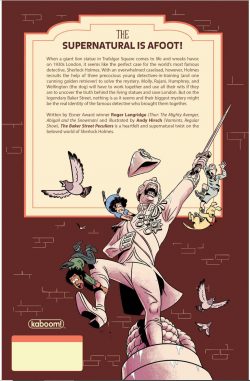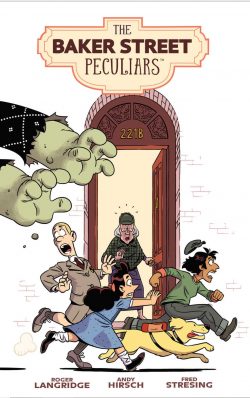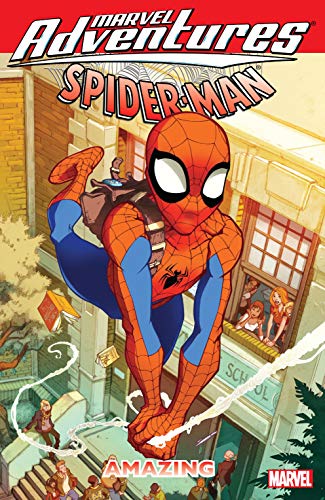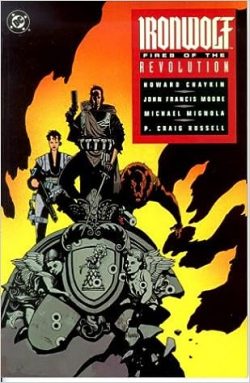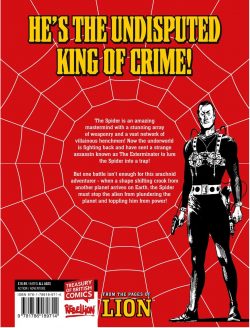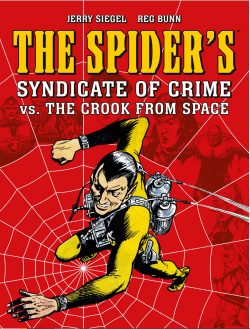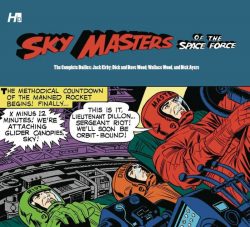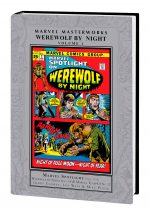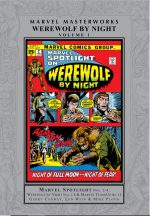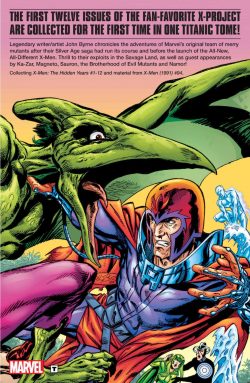
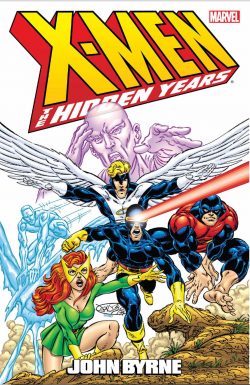
By John Byrne, Tom Palmer, Joe Sinnott & various (Marvel)
ISBN: 978-0-7851-9048-6 (TPB/Digital edition)
During its initial 1960s run, X-Men was never one of young Marvel’s top titles, but it did secure a devout and dedicated following. Launching with moody, manic creative energy, dripping with Jack Kirby’s inspired heroic dynamism, the series comfortably transited into the slick, sleek illumination of Werner Roth, even as the blunt tension of alienated outsider-kids settled into a pastiche of college and school scenarios familiar to the students who were the series’ main audience.
The core team comprised tragic Scott Summers/Cyclops, ebullient Bobby Drake/Iceman, golden rich boy Warren Worthington/Angel and erudite, brutish genius Henry McCoy/Beast, in constant heart- and back- breaking training with Professor Charles Xavier. The wheelchair-bound (and even temporarily deceased) telepath was dedicated to brokering peace and fostering integration between the masses of humanity and emergent mutant race Homo Superior.
After a brief time trying to fit in the normal world, Jean Grey/Marvel Girl returned to the team, which was also occasionally supplemented by Scott’s brother Alex – a cosmic ray fuelled powerhouse codenamed Havok – and mysterious magnetic minx eventually dubbed Polaris, although she was usually referred to as Lorna Dane.
Nobody knew it at the time – and sales certainly didn’t reflect it – but with X-Men #56 superhero comics changed forever. A few years previously Neal Adams had stunned the comics-buying public with his horror anthology work and revolutionary superhero stylings on Green Lantern/Green Arrow and Batman. Now, on this relatively minor title – aided and abetted by writer Thomas in iconoclastic form and inker Tom Palmer producing some of the finest work of his career – the artist expanded the horizons of graphic narrative through boldly innovative, intensely paranoid dramas pitting mutants against an increasingly hostile world.
Subtly – and bravely – pitched at an older audience, the succession of gripping, addictively beautiful epics captivated and enchanted a small band of amazed readers – and completely escaped the attention of the greater mass of the buying public. Without those tales the modern X-phenomenon could not have existed, but back then they couldn’t save the series from cancellation. The cruellest phrase in comics is “ahead of its time…”
The series died despite every radical innovation devised by a succession of supremely talented creators. The last published original tale saw the mutants hunting The Hulk – or rather Bruce Banner – in an attempt to save Professor X from a coma induced by his psychic war against merciless, marauding extraterrestrials the Z’nox.
Adams ended his artistic tenure in grand style in that astounding alien invasion epic, but had moved on by the final outing (X-Men #66, cover-dated March 1970).
Although gone, the mutants were far from forgotten. Standard policy at that time to revive defunct characters was to pile on guest-shots and release reprints. Cover-dated December 1970, X-Men #67 saw them return, reliving early classics whilst a campaign of cameos carried them until the “All-New” team debuted in 1975.
One of the many kids utterly beguiled by the series’ transformation under Thomas & Adams was John Byrne. In 1999 he created a retroactive series in-filling untold events and exploits in the days between cancellation and the birth of the modern team. Pencilling in a passable blend of Adams and his own unique style, with Palmer triumphantly back on inks, Byrne took up where Thomas had left off, detailing untold secret adventures crafted with the advantage of 20-20 hindsight in respect to the decades of continuity that had since passed…
This first of two compilations collects X-Men: The Hidden Years #1-12 (originally published between December 1999- November 2000), and opens with a short teaser/prologue used to promote the series in other Marvel releases.
Featuring a younger, headstrong team far more fractious, aggressive and uncertain than ever seen in contemporary times, the uncanny action sees ‘Test to Destruction’ find the weary mutant heroes seemingly battling an ambush of old foes, only to discover that their peril is a cruel workplace assessment by their surprisingly militant and harsh “resurrected” tutor.
Continuity completists should note this mini-saga occurs between panels of X-Men: The Hidden Years #1, which launched a month later and – whilst recapping all those 1960s classics – dictated that the team revisit ‘Once More the Savage Land’’. This they do without Iceman, who had hot-headedly quit over Xavier’s callous tests and patronising attitude. If he was honest, though, the fact Alex was monopolising Drake’s dream girl Lorna didn’t help…
The team’s voyage south is to confirm the death of archenemy Magneto, but the disgruntled disenchanted heroes quickly fall foul of the steadfast principle dictating that somehow no modern vehicle reaches the primordial preserve without crashing. Narrowly surviving disaster, Angel, Beast and Cyclops are ministering to comatose Jean when they are ambushed by savages, and upon awakening learn Marvel Girl is dead and has been despatched to the Land of the Dead…
The shock is somewhat ameliorated in #2’s ‘The Ghost and the Darkness’ when erudite scholar Henry McCoy deduces exactly what that means here, before saving despondent Scott from suicide-by-T-Rex, and leading his chums in search of her.
Meanwhile in America, Bobby learns of the mission’s failure and that Xavier has sent X-novices Alex and Lorna after them, even as a continent away, Angel’s ultra-wealthy girlfriend Candace Southern buys herself into the crisis…
In a hidden city of freaks at the bottom of the world, the apparent corpse of Marvel Girl has been harvested by eerie priests of an exploitative cult able to raise the dead and rejuvenate the aged and decrepit. The Keepers of the Way have been exploiting the outer tribes’ practice of abandoning their old and sick for centuries, covertly building a monumental forced-labour camp of grateful slaves in an artificially extended underclass. Now, however, that dark paradise and the unstable radioactive volcano it’s built on is nearing its end.
Moreover – as quietly recovering Marvel Girl overhears – the secret rulers have recently started taking survival advice from what appears to be the ghost of Magneto…
Breaking into the citadel, the male X-Men dispel one ancient myth when Cyclops is killed and spontaneously resurrects without the actions of Keepers, leading to the exposure of another factor sustaining the priest-caste’s autonomy…
With enemies all around, Warren is separated from his teammates in ‘On Wings of Angels’ meeting another avian outcast even as Alex and Lorna beat the odds and land mostly in one piece. Even greater fortune blesses them when jungle wonders Ka-Zar and his sabretooth Zabu spot them and take charge of the rescue mission…
In the Keeper city, as Jean is overcome by Magneto, the truth of its imminent explosive doom is uncovered by her fellow X-Men. Angel and mute ally Avia reunite with the other guys in the hangar of a truly unique survival vehicle designed by the Keepers, just as the kingdom is engulfed in boiling lava. Their rush to escape latterly extends to and includes a fully alive master of magnetism in #4’s ‘Escape to Oblivion’…
As the reunited mutants are carried every way the wind blows, Iceman has made his own way to the Savage Land and Candy Southern breaks into the X-Mansion for a ferocious confrontation with Professor X. Unaware that Ka-Zar, Alex and Lorna are still trekking through the green hell of the Savage Land, the X-Men and Magneto’s mob of mutant minions are helpless ‘Riders of the Storm’, with the escape vehicle disintegrating around them. When the maelstrom intensifies and the fragmenting vessel is blown thousands of miles adrift, McCoy falls overboard…
Some of that aforementioned hindsight then manifests in issue #6 as ‘Behold a Goddess Rising…!’ reveals how The Beast’s plummet to earth lands him in rural Kenya at the feet of a young weather goddess called Ororo…
As Professor X and Candy come to an “arrangement” in Westchester County, on the outskirts of the dinosaur-infested Savage Land, Iceman – battered, bruised and briefly amnesiac – is saved from Pteranodons by energy-leach Karl Lykos. In Africa, McCoy is in earnest conference with the weather-warper. She had created a storm to serve her followers, but somehow the event was usurped by some mystery force, expanding to lethal, continent-spanning dimensions.
Having landed but separated but safely, Jean searches for her teammates, unaware Scott is helpless before the culprit, another mutant who has learned to predate on other Homo Superior…
When the other X-Men – past and future – converge on monstrous Deluge, they are easily overcome whilst back in the Savage Land, Ka-Zar, Alex and Lorna aid the survivors of the resurrection volcano, whilst hundred of miles distant, under that now-diminishing storm in the South Atlantic, the trawler “Sigurd Jarlson” pulls a couple of winged freaks out of its nets…
‘Power Play’ in #7 finds the defeated Kenyan contingent rally, escape certain death and apply all their wits, strength and a venerable old tactic to defeat Deluge, whilst under Antarctica, Lykos and Drake bond with the hero utterly oblivious to who Lykos is and what he did to Iceman when they first met. At sea, Angel and Avia learn that their saviours plan to sell them to a unique freak show just as the main X-team reach home in time to be pressured into another manic mission.
With additional inking by Joe Sinnott, #8 reveals a ‘Shadow on the Stars’ as the Fantastic Four of that era (Mr. Fantastic, The Thing, Human Torch and Inhuman princess Crystal) accompany Xavier and the X-Men after the Z’Nox. Although his epic psionic endeavours saved Earth from the marauding space parasites, it only served to unleash them upon other civilisations and now the Professor and Reed Richards intend to rectify that callous dereliction of duty. However, as the star trek unfolds something ancient, cosmic and fiery waits in anticipation for Jean Grey…
And in the Savage Land, the last remnants of the scattered X-Men reunite when Ka-Zar leads Alex and Lorna to Iceman… and Lykos…
X-Men: The Hidden Years #9 anticipates calamities and tragedies to come as ‘Dark Destiny’ finds Marvel Girl test-driven by the Phoenix Force, before being driven off, leading to a spectacular final confrontation with the Z’Nox.
Back on Earth, another plot thread is attached as in suburban Illinois, a little girl discovers a new trick she can play with her dolls…
As Xavier and McCoy investigate a potential New Mutant and learn that ‘Home is Where the Hurt is…’. the remaining team hunt for missing Warren and walk into a trap laid by the Brotherhood of Evil Mutants (Mastermind, Unus the Untouchable, The Blob and evil Professor X analogue Kreuger).
Happily, in ‘Destroy All Mutants’, Candy provides a very human X-factor to tip the scales, but nothing can help the Illinois embassage as little Ashley Martin is corrupted by her power and loses control of the Sentinel she’s “befriended”, forcing Xavier into a pragmatic but cruel sanction…
In the Savage Land, the illusory period of peace ends for the heroes when Magneto and his Mutates attack, sparking the return of Bobby’s memories and triggering the transformation of repentant Lykos into rapacious monster Sauron. ‘And Death Alone Shall Know My Name’ wraps up the first year of untold tales as the scattered mutants reunite to rescue Iceman, Havoc and Lorna, bombastically battling Magneto’s minions and closing with a cameo by Sub-Mariner that segues neatly into the classic saga told decades ago in Fantastic Four #101-104 (That’s not included here. You’ll need another collection for that slice of magnificence.).
Closing this fan-friendly compilation is a cover and variant gallery sans text for all art lovers.
Fast and furious, but ridiculously convoluted, this is a huge thrill for anyone drenched in X-lore and superbly illustrated in prime Fights ‘n’ Tights mode, but I fear might be a stretch for casual readers or newcomers to the many worlds of X.
© 2017 Marvel Characters, Inc. All rights reserved.
